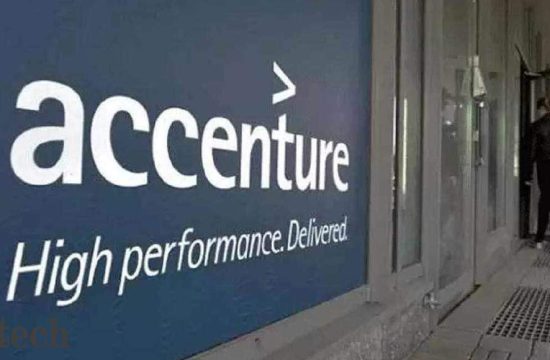
There were masked parking lot festivities, Times Square replicas and virtual bell ringings. There were technical glitches and a corporate logo beamed onto San Francisco’s City Hall.
Welcome to the 2020 IPO celebration during the busiest week of the year for tech debuts. Snowflake had the largest software offering ever on Wednesday, and gaming company Unity is already worth half as much as Electronic Arts after its first day on the market.
Many billions of dollars of wealth were created from those IPOs and others, but the mood was tempered by a raging pandemic that’s killed almost 200,000 Americans, battered wide swaths of the economy, and pushed the tech industry into six months of remote work with no end in sight.
Instead of flying to New York with a few top executives and board members to ring the bell of the New York Stock Exchange or Nasdaq, CEOs addressed their employees by video from home, a conference room or a makeshift podium outside their office. In a year that’s featured Zoom weddings, Zoom bar and bat mitzvahs, Zoom happy hours, and Zoom investor roadshows, the Zoom IPO celebration is now a regular calendar event.
“Six months ago, when the pandemic was hitting, no one would have thought we’d be in the place we’re in today,” said Bonnie Hyun, head of technology capital markets at the New York Stock Exchange, in an interview on Friday. September is poised to be the busiest month for IPOs on record for the NYSE.
Hyun’s team worked with Snowflake and Unity to bring employees together online and to let the companies customize the experience as much as possible while getting the optics of the Big Board.
Press the space bar to clap
Unity, a maker of 3D video game software, invited its 3,700 employees in 17 countries to join a 90-minute virtual event, which started at 9 a.m. Eastern time. CEO John Riccitiello was at a conference room in the company’s San Francisco headquarters, even as his face was projected on to the front of a large black Unity banner hanging on the pillars of the NYSE.
Riccitiello said in an interview that he knows the sign was really there because some employees in New York took pictures of it and tweeted it.
The morning event didn’t start particularly smoothly. At the beginning of Riccitiello’s interview with NYSE President Stacey Cunningham, there was a technical glitch on Skype, and the Unity CEO couldn’t hear a thing coming from New York. After a couple minutes, Riccitiello jokingly asked if Cunningham could try sign language.
When the audio finally started working, Riccitiello touted Unity’s company culture, emphasizing that “we’re all in this together.” At the 9:30 a.m. bell ringing, Riccitiello was clapping with his image superimposed behind the podium. Employees could push the space bar on their computer and join the clapping.
For Snowflake’s IPO on Wednesday, employees were able to tune into a shared site from the 9:30 a.m. bell until the stock started trading a little over three hours later.
Hyun said that those who joined could see some pre-taped conversations and get updates from the trading floor for analysis on what was happening with the bidding. CEO Frank Slootman and Snowflake’s two biggest investors, Mike Speiser from Sutter Hill Ventures and Brad Gerstner from Altimeter Capital, were together — from their own locations — on CNBC’s “Halftime Report” before the stock started trading.
They stayed with the broadcast after the pop.
“We talked all week to investors about what the full ambition is for this company and obviously people are excited about that,” Slootman told CNBC, with Snowflake’s sign at the NYSE on the screen behind him.
While Snowflake captured the interest of Wall Street, the company, based 20 miles south of San Francisco, isn’t a household name. That made an awkward site for some San Francisco residents on Wednesday night, when Snowflake’s name and logo beamed brightly on the dome of City Hall.
As the San Francisco Examiner reported, the city’s schedule showed that the colors that night were supposed to be green, white and red for Mexico National Day. City officials told the Examiner that the light show wasn’t authorized, and a Snowflake spokesperson said another company had made the arrangements for the promotion.
Cloud software companies Sumo Logic and JFrog went public on the Nasdaq this week and combined their virtual celebrations with limited physical festivities outside their Silicon Valley offices.
Sumo Logic CEO Ramin Sayar said some of the preparation for the event was menacing, not just because of the pandemic but also because of the wildfires that were blanketing California, creating creepy skies and unhealthy air conditions through last week.
“There were some dark days when we were doing a lot of the prep,” Sayar said. “I looked outside and it was ominous.”
Fortunately, the skies cleared up this week and Sumo was able to go forth with its plans. The company sent every employee a gift ahead of the IPO, and told them to open it on the day of the offering. The box included a “token of appreciation,” some sweets and a bell, so they could all virtually ring the bell together.
About 40 employees were onsite with Sayar at Sumo’s headquarters in Redwood City, California. They had a replica of the Nasdaq podium, where Sayar stood with some executives for the ringing. Other employees could drive up to throughout the day to take a picture with their families.
Fifteen miles from Sumo’s office, 12 people from JFrog, including the three co-founders, gathered on Wednesday at the company’s U.S. headquarters in Sunnyvale.
Similar to Sumo, the company had a Nasdaq-like podium in the parking lot, where socially-distanced and masked executives clapped their hands during the bell ringing. CEO Shlomi Ben Haim said the company did what it could based on restrictions in Santa Clara county.
“We built a replica of Times Square in our parking lot with a full tower and the JFrog logo,” Ben Haim said.
Unlike a traditional bell-ringing, everyone got to participate. Using an app built by Nasdaq, JFrog was able to let any employee take pictures from their locations and broadcast it on the Nasdaq screen in Times Square. The whole thing was shown on video in Sunnyvale.
If he had to it over again in normal times, “I would still do it in the JFrog space,” Ben Haim said.






